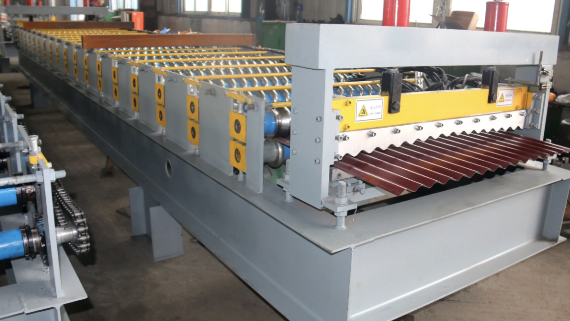1. Main Power Supply
- Voltage Requirement: Roll forming machines often require either single-phase or three-phase power. The voltage can vary depending on the machine size and country of operation, commonly 220V, 380V, or 440V.
- Frequency: In most regions, the power supply is either 50 Hz or 60 Hz.
2. Control Panel
- Circuit Breaker: Installed to protect the machine from electrical overload or short circuits.
- Contactor: Used to switch the electrical power in the control circuits.
- Emergency Stop Button: Required for immediate shutdown in emergencies.
- Inverter (VFD): Used in some machines to control the speed of the motors.
- Power Distribution: Splits power to various components like the decoiler, forming rolls, cutters, and runout tables.
3. Main Motor and Electrical Drive
- Motor Type: Typically, roll forming machines use AC motors with Variable Frequency Drives (VFD) to control speed and torque.
- Motor Power: Power ratings can range from a few kilowatts (kW) to several hundred kW depending on machine size.
- Grounding: A proper grounding system is essential to ensure safety and to prevent electrical interference with control systems.
4. Decoiler and Uncoiler Power Hookup
- Separate motor-driven or hydraulic-powered decoilers/uncoilers will require power connections. These components are usually connected to the main control panel or can have their own power input.
5. Hydraulic Power Unit (HPU)
- If the machine has a hydraulic cutting or punching mechanism, the hydraulic power unit will need its own electrical supply. This can also be connected to the main power source via the control panel.
6. Auxiliary Systems
- Cooling Systems: Some roll forming machines use cooling fans or water cooling systems for the electrical motors and control systems.
- Lighting: Internal lights for the operator's workspace and control panel are often necessary and powered by a separate circuit.
7. Safety Features
- Isolation Transformer: For machines requiring specific voltages or in regions with unstable power, isolation transformers ensure stable operation.
- Surge Protection: To protect sensitive electronic components from power surges.
General Schematic Layout
- Main Power Input: Three-phase or single-phase power connected to the machine’s control panel.
- Control Panel: Includes breakers, contactors, and controllers for powering different machine sections.
- Power Distribution: To motors, hydraulic systems, decoilers/uncoilers, and auxiliary equipment.
- Grounding: Proper grounding to prevent electrical issues.
For precise power hookup schematics, it is advisable to consult the machine’s electrical diagram from the manufacturer, as power requirements can vary by model and region.
4o



